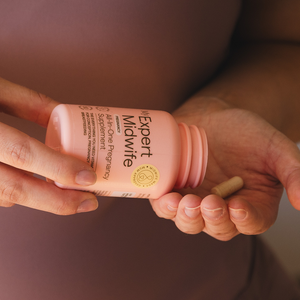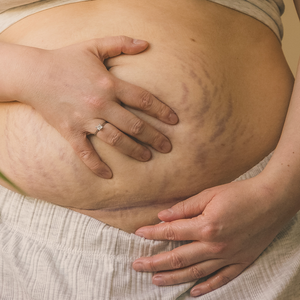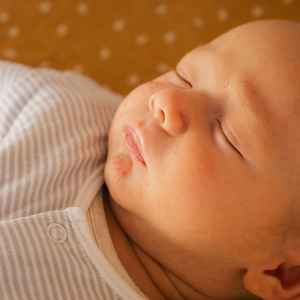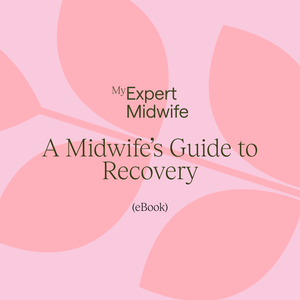Skin is our largest organ and has several important functions.
Not only does our skin protect us from harmful bacteria, allergens, and chemicals, but it also supports water balance and helps to regulate our temperature, helping us to look healthier and more presentable.
As with other organs in our body, there are differences between a newborn's skin and a fully-grown adult's skin, and therefore the care it needs differs as a result.
What is skin?
All skin is made up of 3 distinct layers, all of which serve essential functions:
- A fatty layer helps keep us warm.
- A fibrous elastic layer supplies strength and flexibility and houses nerve endings, blood vessels, glands and hair follicles.
- A thin, tough outer layer acts as a barrier and regulates what can and cannot pass in and out.
What are the differences between newborn and adult skin?
We may not have given much thought to how different a baby’s skin is from an adult’s until we have our own children.
Surprisingly there are quite a few ways that a baby’s skin differs from an adult’s skin. Here are some of the main differences:
Thinner skin
The skin of a baby born at full term is approximately 30% thinner than that of an adult and gradually thickens up to 2-3 years old.
In premature babies, the skin is thinner still as it has not had sufficient time to maturate in the womb.
Skin is more easily damaged
Because it is thinner, newborn skin absorbs sunlight, chemicals, water, bacteria and other substances much more readily than adult skin.
Along with the easy passage of water out of the skin and low levels of natural moisturising factors, their skin is more prone to damage, dryness and infection.
At birth, our skin has a neutral pH which becomes more acidic over the first weeks of life. It is this acidity that provides added protection against potentially harmful substances.
Covered in a waxy coating
Newborns are born with a thick waxy coating called vernix which is packed full of fats, proteins and moisturising factors.
It protects against infection, regulates the baby’s temperature, reduces water loss, hydrates the skin, helps to develop the pH and prevents damage and dryness. It is important to allow the vernix to wear off naturally rather than washing or drying it off.
Skin flora and a baby’s microbiome start to develop from birth and will continue until 2-3 years.
What are skin flora and the microbiome?
The microbiome is a crucial part of our skin, starting to develop from birth and possibly sooner during pregnancy.
It is acquired from the birthing mum and continues to develop and adapt to skin-to-skin contact, breastfeeding and environmental exposure throughout our lives.
It is a highly dense community of bacteria, viruses and fungi, all of which have particular protective functions in supporting our immune systems.
Care must be taken not to disturb the balance of the microbiome. So, simple water and limited use of gentle, specially developed baby products should be used on their skin in the early days, avoiding harsh chemicals that may kill or disturb the natural flora.
Check out our range of midwife-developed baby skincare products here.
Caring for newborn skin
As you can see from above, your baby’s skin is a delicate organ that requires nurturing to ensure that it can develop and provide the best protection possible. Damage and skin disturbance can lead to long-term problems such as eczema, infection and dryness.
Here are some key tips to follow:
1. Try to keep the vernix intact
When your baby is born, welcome them into direct skin-to-skin with you or your partner and only gently dry them with a towel so that any vernix on their skin is not removed. If there is any blood or poo, gently wipe it off with warm water and cotton wool or soft cloth.
2. Avoid bathing your baby too soon or too often
It can take the baby some time to stabilise its temperature. Never bathe a baby who is struggling to support their temperature or one who is unwell.
A maximum of two to three baths a week is sufficient unless the baby is visibly dirty and needs cleaning. This will help to avoid over-drying the baby’s skin.
3. Wash your baby using appropriate products
Water alone is fine for bathing baby, but if you do want to use products, it’s essential to:
- Avoid products that contain harsh surfactants such as sodium lauryl sulphate, which can strip natural moisturising oils from the skin, leading to irritation.
- Choose products specially formulated for newborn skin.
- Choose soap-free products.
- Choose a pH-neutral or slightly acidic range to mimic your baby’s skin pH.
If your baby is experiencing skin irritation, you may be interested in reading our article on identifying and treating baby skin rashes.
Gentle baby skincare will promote strong skin
Delicate newborn skin needs to be cared for very differently from how we care for mature skin. This is important to its long-term well-being, strength and health.
Protective, thoughtful, and gentle skincare from an early age will help improve the development of strong, healthy and well-balanced skin in the future
Check out our range of baby skincare products, specially formulated for delicate skin by our expert midwives.



















